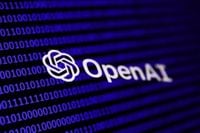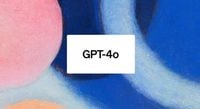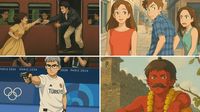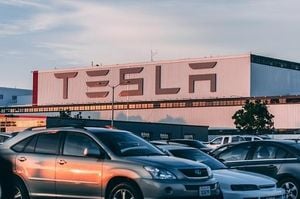OpenAI has recently launched its new image generation model, GPT-4o, which has quickly become a topic of heated discussion. The model is touted for its impressive capabilities, including generating legible text within images, creating realistic fake photos, and producing deepfakes of celebrities. However, its ability to replicate copyrighted characters, particularly those from Studio Ghibli, has raised significant concerns among creators and industry experts alike.
Since its launch, the GPT-4o image generator has been able to produce images at an astonishing speed, responding to user prompts with remarkable accuracy. Yet, the absence of visible watermarks on AI-generated images has led to worries about misinformation and the potential for misuse. Critics argue that this feature facilitates the creation of deepfakes, making it alarmingly easy to misrepresent individuals, particularly public figures.
OpenAI has faced backlash for its handling of these concerns. Despite receiving criticism since the model's release, the company has been slow to address the issues surrounding deepfakes. The only way for individuals to prevent their likeness from being used by the model is through an opt-out process, which many find inadequate. OpenAI engineer Joanne Jang acknowledged these criticisms in a blog post, explaining that the company is attempting to balance user creativity with safety.
Jang emphasized the importance of allowing users to explore their creativity through GPT-4o, stating, “Images are visceral. There’s something uniquely powerful and visceral about images; they can deliver unmatched delight and shock.” However, her comments also highlight the blurred lines between creativity and ethical responsibility.
In a notable shift, OpenAI has revised its content moderation policies. Previously, the model rejected prompts that could be deemed offensive, such as requests to alter physical characteristics. Now, OpenAI has adopted a more nuanced approach, allowing the generation of images depicting public figures and controversial symbols, provided they do not endorse extremist agendas. This change has sparked debates about the implications of such freedom, especially in the context of hate speech and misinformation.
Furthermore, the company has taken steps to ensure that users can opt out of having their likenesses generated by the model. This decision aims to address concerns raised by public figures like Scarlett Johansson, who previously called for regulations on deepfakes. Jang noted that OpenAI does not wish to act as the gatekeeper of who can be depicted, thus opting for a more democratic approach to content generation.
While the new guidelines have opened the door to greater creative freedom, they have also raised alarms about the potential for misuse. Critics argue that allowing the generation of deepfakes and controversial symbols could lead to harmful consequences, including the manipulation of public opinion and the spread of disinformation. As OpenAI continues to navigate these challenges, the company insists that it is committed to refining its policies based on user feedback.
In a parallel development, MG Siegler, a tech commentator, expressed his excitement over the new features of GPT-4o after watching an OpenAI video. He compared the feeling of joy he experienced to that of attending past Apple events, reflecting a sense of nostalgia for innovation. Siegler tested the updated ChatGPT by asking it to create images of characters from the show “Severance” as Lego figures. The results were impressive, showcasing the model's ability to generate relevant and creative outputs.
In contrast, when using Apple’s own image generation tool, the results fell flat, failing to capture the essence of the characters. This comparison highlights the advancements made by OpenAI in its image generation capabilities, which have quickly garnered attention and praise.
Despite the excitement surrounding GPT-4o, OpenAI has temporarily suspended free access to the in-app image generator just a day after its release. This decision came in response to a viral trend where users flooded social media with AI-generated images mimicking the style of Studio Ghibli. OpenAI CEO Sam Altman acknowledged the overwhelming popularity of the feature, stating that the demand exceeded expectations.
Altman’s announcement on X revealed that while the image generator would remain available to paid subscribers, the rollout for free-tier users would be delayed. This move has raised questions about the accessibility of AI-generated content and the implications of restricting access based on payment.
Legal and ethical concerns regarding AI-generated art continue to loom large. While generating images in the style of a well-known studio does not inherently violate copyright laws, it exists in a legal gray area. OpenAI has clarified that while it can replicate a studio’s aesthetic, it does not emulate individual artists’ styles to avoid potential legal issues.
The rapid evolution of AI-generated content has prompted discussions about the responsibilities of tech companies in regulating their products. As OpenAI navigates the complexities of content moderation, it must balance innovation with ethical considerations. The recent changes to GPT-4o’s image generation capabilities may provide users with unprecedented creative freedom, but they also raise important questions about the potential for misuse and the impact on society.
As the conversation around AI continues to evolve, it remains to be seen how OpenAI will address these challenges and what the future holds for AI-generated content. With the landscape of technology constantly shifting, one thing is clear: the implications of AI in creative fields are far-reaching and warrant careful consideration.









